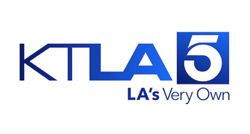
Sole Proprietorship: Net profit or loss is computed on Schedule C and is reported as income or loss on the owner’s Form 1040. The owner is subject to 15.3% Self Employment (SE) tax for 2014 on net earnings from self-employment as well as income tax on the sole proprietorships net income at their individual graduated tax rates.
Partnerships: Partnership income and expenses flow through to the partners. Income is taxed to the partner whether or not it is distributed. Pass-through items retain the same character to the partner as they had in the partnership. A general partner’s share of business income (including guaranteed payments) is subject to SE tax. A limited partner’s share of business income is not subject to SE tax unless the partner performs services for the partnership.
C Corporations: A C corporation pays tax on its profits. A distribution of profits to shareholders usually results in double taxation. Qualified personal service corporations are taxed at a flat rate of 35%. Shareholders who perform services for a corporation, including officers, are treated as employees. Wages of corporate employees are subject to payroll tax and withholding. Wages paid to employee shareholders must be reasonable. Dividend distributions are not subject to SE tax but are taxable on the recipient shareholder’s individual tax return.
S Corporations: An S Corporation’s income and expenses flow through ratably to its shareholders on an annual basis. The annual income of an S Corporation is taxed to its shareholders in proportion to their individual ownership percentages, whether or not, the shareholders share of the corporation’s profit is actually distributed to them. An employee-shareholder of an S corporation receives wages for services rendered to the corporation. These wages must be reasonable. The profits passed through to the shareholders are taxable for income tax purposes but not for SE purposes. The double taxation of Corporate profits common to C Corporations is thus avoided.
LLCs: Multi-member LLCs electing to be taxed as partnerships, C Corporations or S Corporations have the same general tax implications as a partnership, C Corporation or an S Corporation depending upon which entity type is selected for tax purposes. Members’ guaranteed payments, where the LLC elects to be taxed as a partnership, are subject to SE tax.
Tax Comparison Chart for Business Entities
|
|
Sole Proprietorships |
Partnerships
|
S Corporations |
C Corporations |
Contributions of Property |
N/A |
Contributions of appreciated property without recognition of taxable gain (IRC §721(a)). |
Nonrecognition treatment if property exchanged solely for stock and transferors have control (80% of stock) (IRC §351). |
Nonrecognition treatment if property exchanged solely for stock and transferors have control (80% of stock) (IRC §351). |
Distributions |
N/A |
Generally, distributions of appreciated property to partners without recognition of taxable gain (IRC §721(a)). Built-in gains may be attributed to contributing partner. |
Distributed appreciated property treated as a sale-gain recognized (IRC §311(b)(1)). Tax free to extent of basis to shareholder. |
Distributed appreciated property treated as a sale-gain recognized (IRC §311(b)(1)). Distributions to extent of earnings and profits are taxable as dividends. Dividends may be subject to 3.8% Medicare tax. |
Gain on Sale of Business or Interest |
Taxation based on nature of the asset. Depreciation recaptured at ordinary rates, unrecaptured depreciation 25%, collectibles 28%. |
Potential ordinary tax on hot assets (IRC §751). Look-through Rules: Unrecaptured depreciation (25%) and appreciated collectibles (28%). |
Capital Gain – gain on sale of stock generally capital gain. 28% on collectibles. No look through on depreciation on §1250 property. |
Capital Gain. Qualified Small Business Corporations have IRC §1244 exclusion along with §1045 rollover ability. |
Loss on Sale of Business or Interest |
To extent that property is used in a trade or business, results in ordinary loss. |
Losses from disposition of interest are generally capital losses. |
IRC §1244 – ordinary loss treatment for up to $100,000 (MFJ). |
IRC §1244 – ordinary loss treatment for up to $100,000 (MFJ). |
Basis/At risk |
Only nonrecourse loans not at risk. |
Tax basis from partnership’s debt. At risk rules more liberal than S corporations allowing for Qualified Nonrecourse Loans. |
Losses are limited to stock and debt basis. Basis is reduced even if no tax benefit is derived. |
At risk rules apply to closely held C corporations. |
Passive Loss Rules |
Apply – owner normally meets material participation with the substantially all participation test. |
Apply at the partner level. |
Apply at the shareholder level. |
Applies, closely held C corporations that are not a PSC can use passive losses to offset net active business income, but not portfolio income. |
Fringe Benefits |
Self-employed health insurance deduction. Spousal employment can allow for totally deductible health insurance and medical reimbursement. |
Accident and health insurance treated as guaranteed payment. Self-employment health insurance deduction applies. Employ spouse for deductibility at partnership level. |
2% shareholders and related parties – health insurance added to W2 and deducted on personal return. Other benefits treated as compensation. |
C corporations can offer a number of tax-advantaged fringe benefits to shareholder/employees, as well as to non-owner employees. |
Year End |
Generally use 12/31. |
Generally required to use year-end of principal partner. |
Generally use 12/31. |
C corporations, other than PSCs, are allowed to report on a fiscal year for income tax purposes. |
Cash Basis – $1 Million Exception |
Applies |
Applies – unless tax shelter. |
Applies—unless tax shelter. |
Applies |
Cash Basis – $10 Million Gross Receipts |
Applies |
Applies – unless tax shelter. |
Applies unless tax shelter. |
Does not apply when gross receipts are in excess of $5 million. |
Tax Comparison Chart Notes:
- Cash Basis – any business with average annual gross receipts of $1 million or less is eligible and businesses in selected industries with three-year average annual gross receipts of more than $1 million but less than or equal to $10 million. C corporations not eligible after $5 million. IRC §448(c) allows for cash to be used up to $5 million where inventories are not a material income producing factor.
- A closely held corporation is defined as a corporation in which more than 50% of the stock’s value is held by five or fewer individuals at any time during the last half of the year.

















